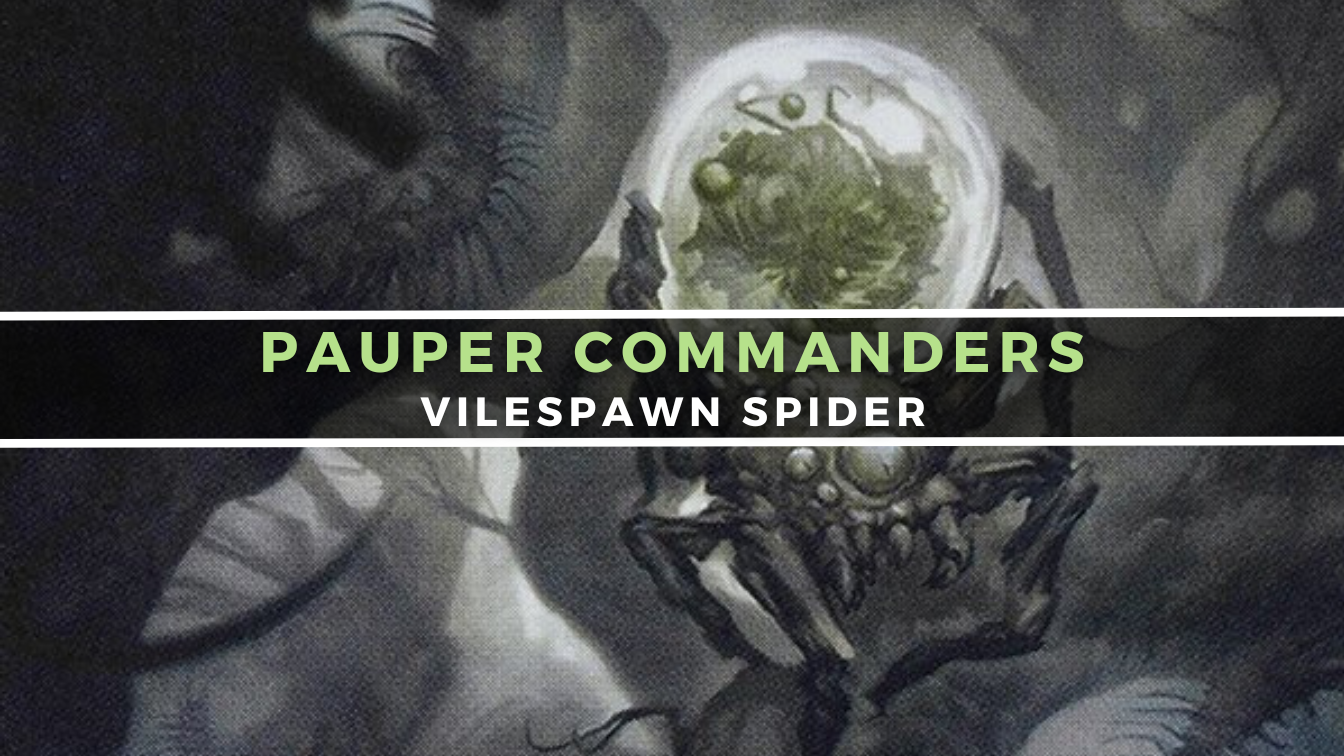Pauper Commander - Spider Spawning

In Pauper EDH, you don't have access to a lot of big numbers. There's no Progenitus
There's a few things we have to keep in mind while building this deck. Our goal is to get as many creatures in the graveyard as possible, and the best way to do that is with mill. There are plenty of cards that put cards into your graveyard from your library, and many of them do it as a "downside," meaning that the numbers are large, but since we're taking those cards from the top of our deck, we have no control over what's getting milled, and the only way to make sure we get a lot of creatures is to have a high density of them in our deck. In order to get the numbers we want, I'd say we need at least every other card to be a creature. We're not opposed to running other card types, but if we don't have a colossal amount of cards with power and toughness, this deck will never function.
So let's see what the best creatures that mill are. There's some classics, like Satyr Wayfinder
Of course, there are other ways to get cards into the graveyard. One way is simply to play creatures that sacrifice themselves. Sakura-Tribe Elder
There are some creatures that don't fit into any of those categories but are very strong nonetheless. Dreamscape Artist
I almost attempted to make an "oops all creatures" deck for this build, but we're missing out on a lot if we refuse to play noncreature spells. Mulch
The final thing this deck needs are some cards taking advantage of our hoard of Spiders. A copious amount of arachnids is pretty great on its own, but there are some cards that can really power them up. Echoing Courage
This is the problem that really holds back the deck. We can make a horde, no problem, and we can attack with said horde, but even if there's twenty Spiders, they can't really close out the game as 1/1s. Without a game-ending swing, we're vulnerable to potent crackbacks, and the deck struggles to deal with opposing attacks thanks to its saturation of utility creatures that are only there to mill. Luckily, I think there's a solution to the problem, and it lies in how you play the game. If you swing out with just ten Spiders from your first activation, all you get is the malice of the table. But if you invest in your Spiders and continue to recast and sacrifice your commander, you can build a winning board state, slowly but surely.
Pauper Commander - Spider Spawning
View on ArchidektCommander (1)
Creatures (41)
- 1 Avenging Druid
- 1 Blanchwood Prowler
- 1 Cathartic Adept
- 1 Caustic Caterpillar
- 1 Cephalid Looter
- 1 Circle of the Land Druid
- 1 Colossal Badger // Dig Deep
- 1 Deranged Assistant
- 1 Dragonborn Looter
- 1 Dreamscape Artist
- 1 Drowner Initiate
- 1 Eccentric Farmer
- 1 Essence Warden
- 1 Excavated Wall
- 1 Gnarlroot Pallbearer
- 1 Golgari Brownscale
- 1 Greater Mossdog
- 1 Groundskeeper
- 1 Haze Frog
- 1 Ivy Lane Denizen
- 1 Looter il-Kor
- 1 Masked Vandal
- 1 Merfolk Looter
- 1 Merfolk Secretkeeper // Venture Deeper
- 1 Moldgraf Millipede
- 1 Mulldrifter
- 1 Organ Hoarder
- 1 Patient Naturalist
- 1 Sage's Row Denizen
- 1 Sakura-Tribe Elder
- 1 Satyr Wayfinder
- 1 Scaretiller
- 1 Seer of the Last Tomorrow
- 1 Selhoff Entomber
- 1 Selhoff Occultist
- 1 Skola Grovedancer
- 1 Spore Frog
- 1 Springbloom Druid
- 1 Thought Courier
- 1 Undergrowth Scavenger
- 1 Vigorspore Wurm
Sorceries (4)
Instants (10)
Enchantments (6)
Lands (38)
Well, I'd say this deck is pretty successful when it comes to making a ludicrous amount of arachnids. It's not difficult at all to mill yourself in any format. Though the deck doesn't possess the ability to stampede over opponents like most token decks do, it still has plenty of ways to win, as long as the deck is played right. Are there any other decks where the play pattern, rather than the cards, determine victory?